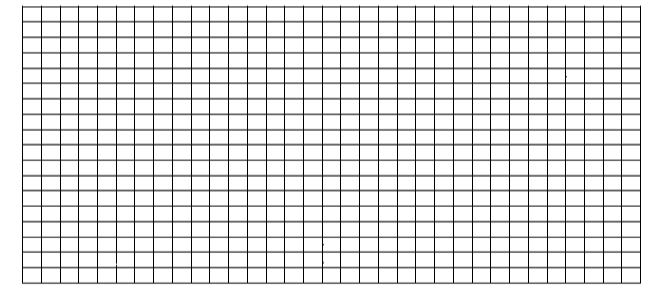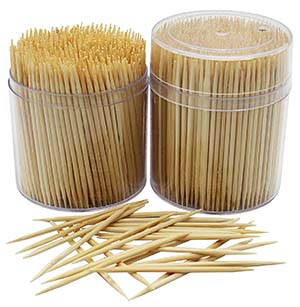Investigation: Modeling Enzyme Activity with Toothpickase
In this activity, you will model the action of enzymes breaking down a substrate. You thumb and forefinger will serve as the active site of the enzyme, and a toothpick represents the substrate. Without looking, you will use one hand to break a toothpick in half.
Materials: Toothpicks (50 per team), Colored Toothpicks (25 per team), masking tape, stopwatch (clock)
Procedure:
- You must break each toothpick one at a time.
- You may only use one hand.
- The toothpick must be broken completely in half.
- Keep your eyes closed so each toothpick is chosen at random.
- Toothpicks can only be broken once.
1. Spread 50 toothpicks out on the table in a random pile.
2. One person plays the role of the enzyme, while the other keeps time.
3. Break toothpicks for 10 seconds. Stop and record the TOTAL number of toothpicks broken. (Broken toothpicks remain in the pile.)
4. Start timer again, break toothpicks for 20 more seconds (total of 30 seconds). Record.
5. Repeat until you have recorded the total number broken at 60 seconds and 120 seconds.
Part 1: How Fast Does an Enzyme Work Under Normal Conditions?
Time |
Total number of toothpicks broken (products) |
Amount of substrate remaining |
0 |
0 | 50 |
10 |
|
|
30 |
||
60 |
||
120 |
Part 2: Competitive Inhibition
Repeat the procedure, but this time add 25 colored toothpicks to the pile. These represent substances the the enzyme (your fingers) can interact with that are not the substrate. The colored toothpicks will not be counted.
Time |
Total number of toothpicks broken (products) |
Amount of substrate remaining |
0 |
0 | 50 |
10 |
|
|
30 |
||
60 |
||
120 |
Part 3: Enzyme Denaturation
Enzymes exposed to heat or acidic conditions can become denatured. Their shape changes in a way that interferes with their activity. To model this process, wrap masking tape around your thumb and forefinger and repeat the experiment.
Time |
Total number of toothpicks broken (products) |
Amount of substrate remaining |
0 |
0 | 50 |
10 |
|
|
30 |
||
60 |
||
120 |
Data Analysis and Conclusions
1. Graph the data for parts 1 and 2 on the grid below. Time should be on the X axis and products on the Y axis. Be sure to label your two lines.

2. What is the enzyme in this model? What is the substrate?
3. What happens to the number of products over time (see graph or chart)?
4. The rate of reaction is determined by dividing the change in amount by the change in time.
Δ amount / Δ time
Was the rate of reaction the same across all the time periods? Explain any differences observed.
5. Predict what would happen if you double the number of toothpicks (substrate).
6. Predict what would happen if you doubled the amount of enzymes (two people breaking toothpicks).
7. Predict what would happen if you increased the number of competitive inhibitors in the system.
8. Enzyme activity can also be altered by noncompetitive inhibition. In this case, a molecule binds to an area that is not the active site, but does change the shape of the active site. Describe how you could model this using the toothpick activity. Use your imagination here!



